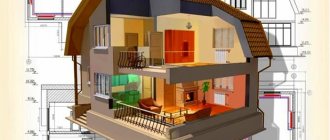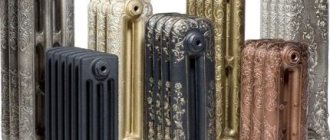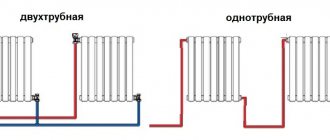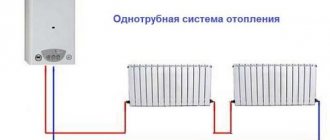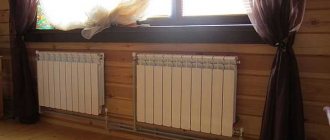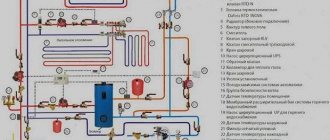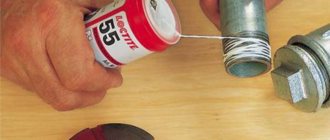When planning a major renovation of your home, you need to take good care of the heating system. To do this, you need to thoroughly study the types of batteries, connection methods and place them correctly. The heat transfer in the entire room will depend on the correct connection of the radiators.
Let's look in more detail at how to install batteries effectively and without outside help.
Factors affecting the efficiency of radiators
A properly installed heating system significantly reduces fuel costs. When installing batteries yourself, you need to consider the following factors:
- Parameters and heat transfer of all elements of the heating system
- Location of appliances in the house
- Installation method.
The building materials market offers a huge selection of radiators, which amazes with the variety of shapes, sizes, heat transfer, installation methods and materials for manufacturing. When purchasing a heating system, it is necessary to provide for all of the above indicators.
For certain rooms, batteries are selected individually. Radiators are located under windows, between windows, in the corners of rooms, in hallways, storage rooms, and bathrooms.
It is recommended to install heat-reflecting materials between walls and radiators. When installing radiators, the following rules must be taken into account:
- Batteries in the room should be located at the same height
- The edges of the convector must be vertical
- Heating elements must be installed in the center of window openings
Radiators are mounted at a distance from window sills of at least five centimeters, from floors of at least six centimeters. The optimal range is considered to be from 10 cm to 12 cm
During installation, you should select the correct connection diagram for heating radiators, take into account the size of the room, and the thermal power of heating devices.
Types of lower pipe connections
- One-sided. With a one-way connection, two pipes of the heating device exit from one side. In this case, hot water passes through the upper radiator plug, and cold water is discharged through the lower one, which is located next to the upper plug.
- Versatile. In the case of a versatile connection, a pipe with hot water enters on one side, and cold water is discharged from the opposite side. This type of liner is ideal for individual heating systems. The big advantage here is that water flows to the heating devices in any direction: bottom-up, top-down, bottom-down. A versatile liner has a shorter length of supply and return lines. The choice depends on the level of heat transfer that is most appropriate to obtain for the room.
Installation diagrams and their specifics
There are fundamental differences in heating equipment installation projects. This depends on how the pipes will be routed. The wiring can be single-pipe or double-pipe. In each type, a horizontal and vertical riser system is distinguished.
Each type has its own variation of connecting radiators. Single-pipe and two-pipe systems have the ability to use side, bottom and diagonal methods for installing heating elements. Let's look at each of the methods in more detail.
Single pipe system
The one-pipe method is when all radiators are connected to one pipeline. When installing this method, it is necessary to correctly calculate the diameters of the pipes for effective heat transfer. This type has its positive and negative qualities.
When connecting, you can significantly save money on materials, but only with a falling vertical riser. Suitable for five-story buildings.
Classification of panel devices
Panel radiators come in three types:
- profile;
- smooth;
- hygienic.
In the manufacture of profile devices, sheet steel is used, all external surfaces are coated with a protective powder coating. Moreover, the neutral anti-corrosion varnish, which is also used in manufacturing, significantly extends the service life. The color can be any - there are no restrictions here.
The second and third types of radiators are used in educational institutions, hospitals and kindergartens. Vivid examples are the products of brands such as, say, Purmo or Kermi.
Important! The advantage of tubular batteries over panel batteries is that the former can be turned in any direction, while the latter should be purchased with a predetermined connection. And in old buildings, pipes do not always fit new batteries. Although this problem can be solved - this requires relocating the pipeline
Side method
This method is used for one-pipe and two-pipe systems. It has a distinctive feature: the pipe for processing and supply is mounted from a certain edge of the radiator.
The scope of application is considered to be multi-storey buildings in which a vertical coolant supply is installed.
Types of lower pipe connections
- One-sided. With a one-way connection, two pipes of the heating device exit from one side. In this case, hot water passes through the upper radiator plug, and cold water is discharged through the lower one, which is located next to the upper plug.
- Versatile. In the case of a versatile connection, a pipe with hot water enters on one side, and cold water is discharged from the opposite side. This type of liner is ideal for individual heating systems. The big advantage here is that water flows to the heating devices in any direction: bottom-up, top-down, bottom-down. A versatile liner has a shorter length of supply and return lines. The choice depends on the level of heat transfer that is most appropriate to obtain for the room.
Diagonal connection
With this method, heat loss will be minimal. A distinctive feature is a one-way heat supply, passing through the entire radiator, and is removed from the other side using a hole.
Diagonal connection of heating radiators is considered effective if there are batteries with a large number of segments, but not less than twelve.
Solid fuel boilers - tips for choosing the best models and ideas for using boilers for heating (110 photos and videos)Screen for a heating radiator - a review of the best ideas and recommendations from designers for selecting screens for a heating system
- Chimneys for gas boilers - main types and step-by-step instructions for do-it-yourself installation (video + 100 photos)

